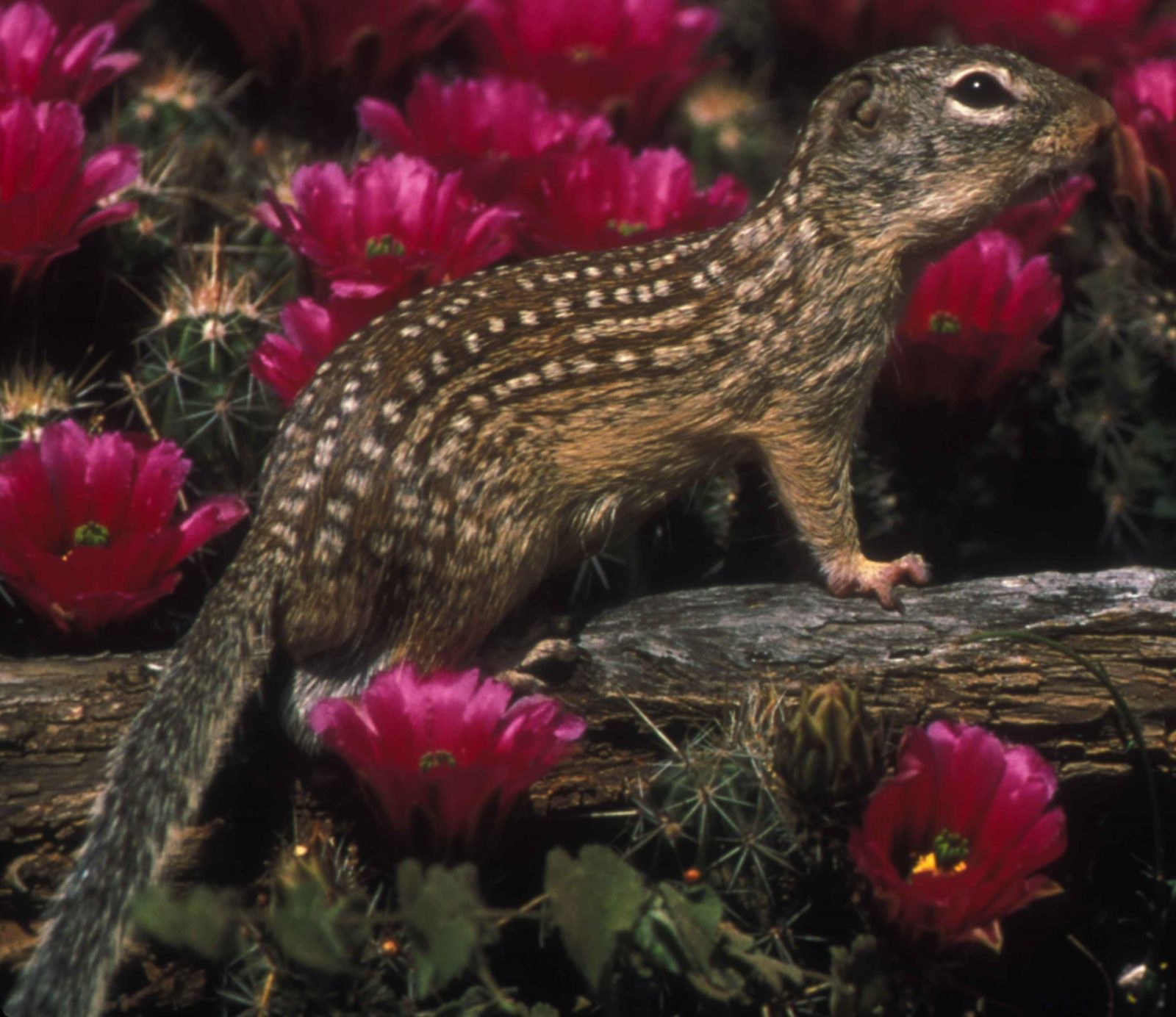
Mexican ground squirrel
The Mexican ground squirrel is found throughout northern Mexico, the Texas Gulf Coast, western and central Texas, and southeastern New Mexico. The Mexican ground squirrel lives in flat, brushy, or grassy areas and usually prefers areas with gravelly or sandy soil or areas with that have mesquite.
While much of its original habitat has been changed beyond recognition by humans, it has adapted well to human civilization and can now be found on golf courses and other grassy areas such as the sides of highways. Each squirrel usually has several burrows and each of them have as many as five escape tunnels. The tunnels do not have a mound of dirt at the top. Most burrows have a sleeping chamber for the offspring which is lined with grasses.
The Mexican ground squirrel is omnivorous (eating meat and plants), but eats primarily seeds and grains. Its diet includes seeds, nuts, grains, roots, bulbs, plant stems, leaves, mice, insects, and eggs. It often stores seeds, grains, and nuts in its cheeks pouches and takes them back to its den to eat later. In the summer it eats insects. It has also been documented seen eating road-kill, which is another adaption to living alongside humans (though it is quite possible that they will eat from remains of kills if they encounter them, as well.
They mate between April and mid July, with a peak in May. Females can mate after their first season of hibernation. It is common for most Mexican ground squirrels to hibernate, but there have been cases where they have not (though whether this is as a result of climate change, and might become more obvious in the future, is still to be decided. The species is normally solitary, but obviously comes together in groups during the mating season. It has been found that female hormone levels change during this period to allow the coming together of groups without aggression. During the mating season, The female will prepare a nesting chamber in her burrow and line it with mesquite and grass; here she will give birth to a litter with average litter size of five, but can range from one to ten. The young are born toothless, without fur, and will stay with their mother for three months before becoming independent.
The Mexican ground squirrel has evolved an interesting adaptation to help it survive after being attacked by some snakes, in that it has developed resistance to the venom of the western diamondback rattlesnake. The squirrel has an antihemorrhagic factor which neutralizes hemorrhagic activity of this specific species of rattlesnake. In addition, the squirrel’s small, rear-pointing ears are effective for detecting predators – meaning it often has enough warning to make its escape.
They are listed as least concern.
Below, you will find a list of any articles on this subject, and below that a video. Under this, we hope to list places and resources for you to see this species in its wild environment.
Please note: there are currently at least 69 species of ground squirrel recognized. At least one species is found on all continents except Australia and Antarctica.
My experience is with the Cape ground squirrel.










